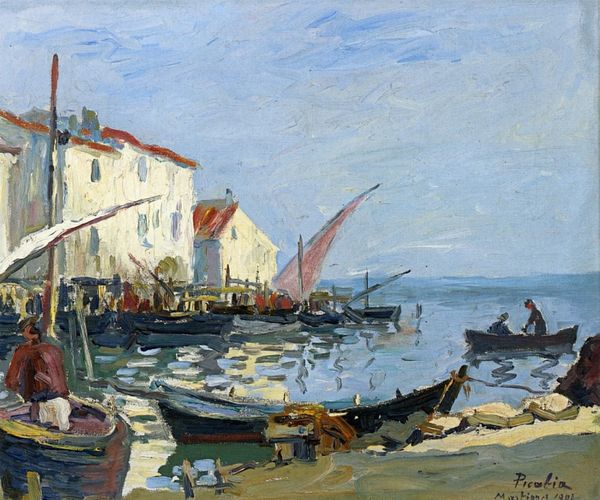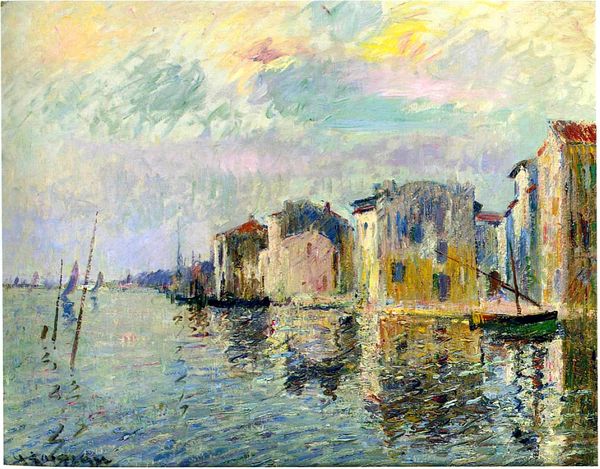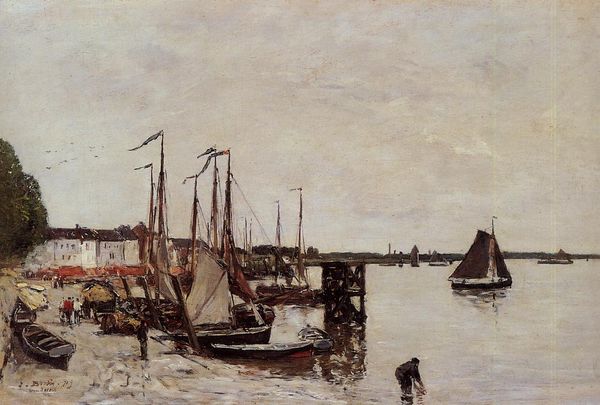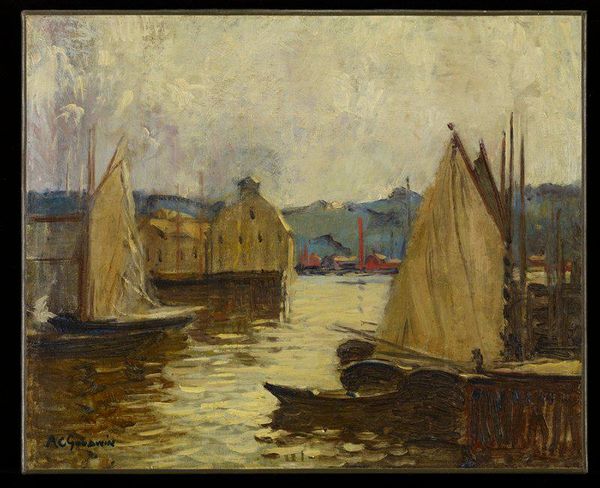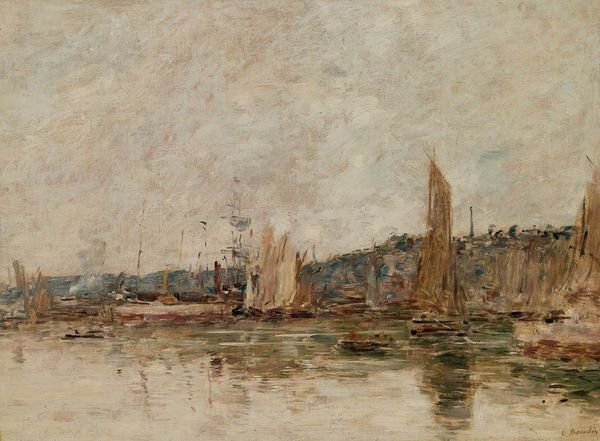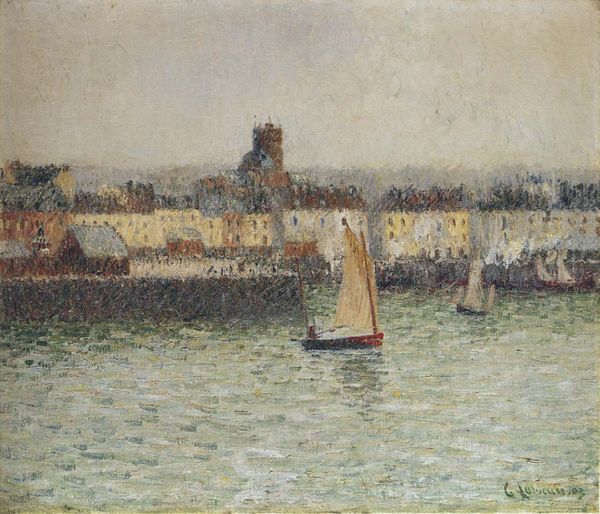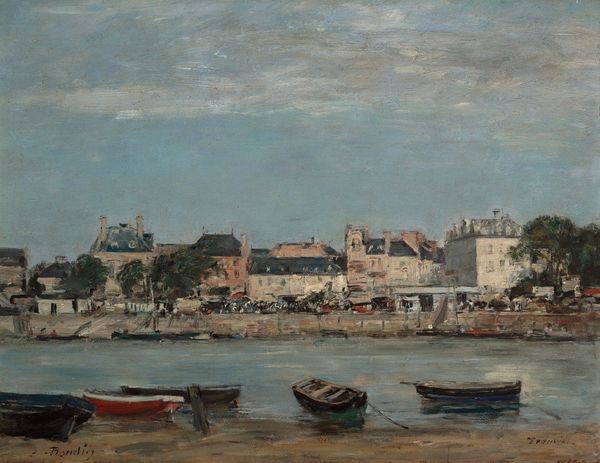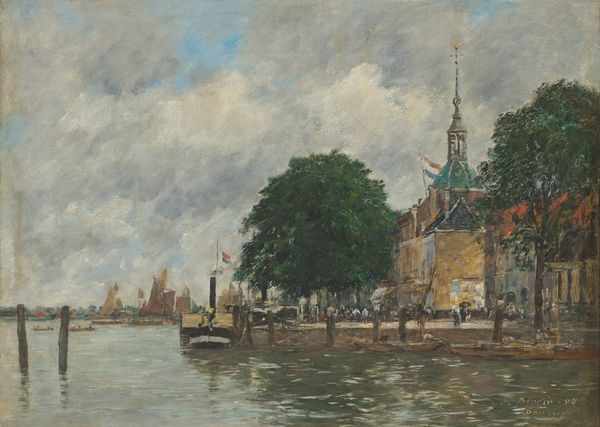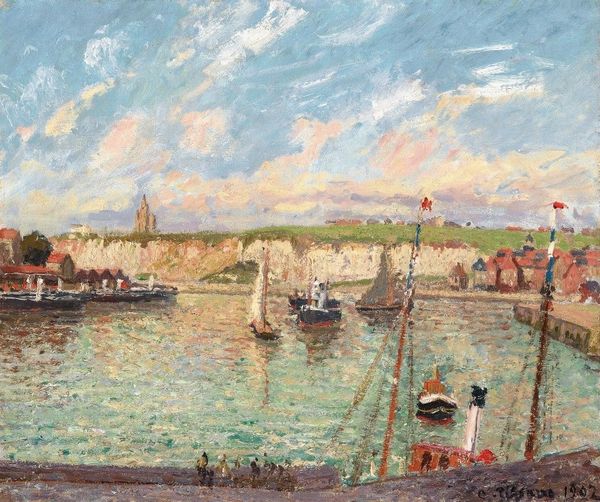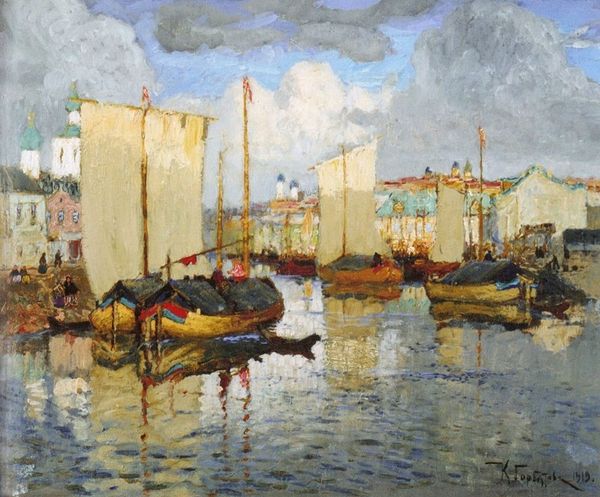
Copyright: Public Domain: Artvee
Editor: So, this is Eugène Boudin's "Venise; le quai et l’église San Biagio," painted in 1895, with oil paint. It feels...almost hazy. What do you see in this piece? Curator: I see more than just a pretty cityscape. Boudin, though associated with Impressionism, captures here the intense dynamics of Venice as a crucial site of global exchange and the flow of capital. Consider how the brushstrokes render both the architectural permanence of the church and the ephemeral movement of ships. Isn't he hinting at the uneasy relationship between tradition and the rise of maritime capitalism? How do the figures on the quai and in the gondolas play into this contrast? Editor: That's a perspective I hadn't considered. The figures seemed more like accents in the landscape to me. But what you are saying makes me think about the position of these ordinary people compared to that of the sailing ships. Curator: Precisely. And don’t overlook the social implications! Venice was a complex socio-political hub with class divisions sharply defined by access to trade and maritime power. Are these merely tourists, or do they represent varying levels of participation in the city's economy? Editor: I suppose you can’t look at a landscape innocently, or neutrally. Even a simple boat ride meant something entirely different depending on who was in the boat. What an activist reading implies…! Curator: Yes, examining a work within its historical and social setting opens up layers of meaning, revealing the complex and unequal relations embedded in seemingly beautiful scenes. Boudin unwittingly offers us insight into the intricate tapestry of Venetian life during a period of immense global transition.
Comments
No comments
Be the first to comment and join the conversation on the ultimate creative platform.

